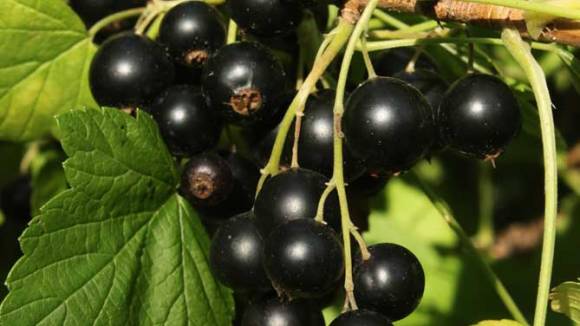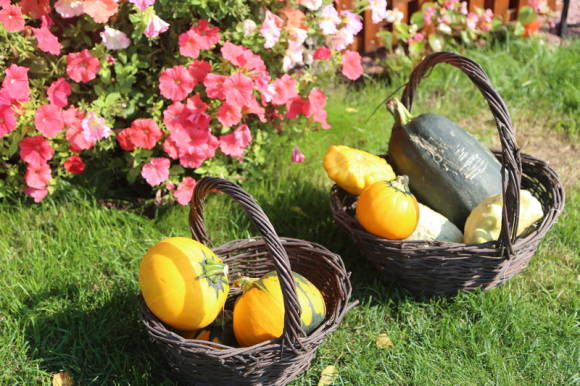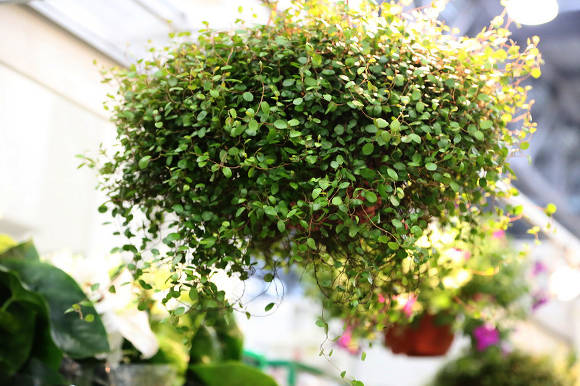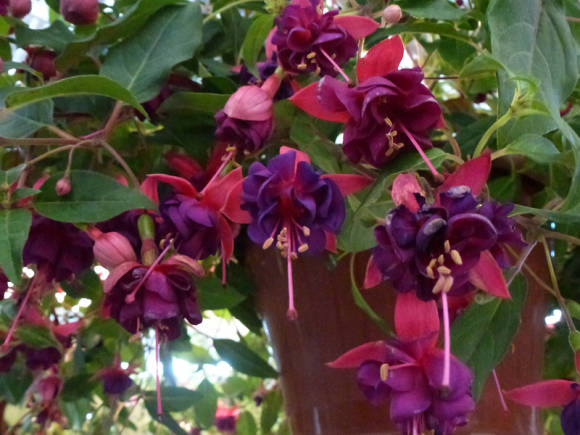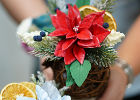Chilean araucaria (Araucaria araucana), or Chilean pine (family araucariaceae (Araucariaceae)), is now grown in different parts of the world and is often found under the name Monkey Puzzle. However, this does not mean that monkeys love her so much. To understand the origin of this name, it is worth getting to know this plant better.
 |  |
Chilean araucaria(Araucaria araucana) - This is a majestic evergreen coniferous tree with a straight trunk, covered with thick, gray, lamellar bark, reminiscent of a tortoise shell, and a pyramidal crown, consisting of tiered 6-7 branches. With age, the height of the plants reaches 50 (75) m, and the girth of the trunk is 2.5 m. The plant gradually loses its lower branches, which first lie on the ground, and leaves a small umbrella-shaped crown. The needles of the plant are similar to leaves, leathery, tough and sharp, spear-shaped, 3-4 cm long, in young specimens they spirally cover not only the branches, but also the trunk. Lives for 10-15 years and often falls off along with the branches. To many, the branches of this plant seem frightening, reminiscent of ancient reptiles.
The plant is more often dioecious - green, spherical, up to 20 cm in diameter, female strobili appear on the tops of the shoots, or a little later - cylindrical, up to 15 cm long, male dark brown strobili. Monoecious specimens are less common. Cones are spherical, up to 15 cm in diameter. 3 months after pollination, seeds ripen up to 4-5 cm long and 1.5 cm wide, which spill out over 16-18 months, scattering at a distance of 11-15 m (i.e., the entire reproductive period lasts about 2 years ). The seeds are edible and nutritious, and taste like pine nuts. Just like the cedar, the Chilean araucaria enters into abundant fruiting only at the age of 40-50. But these years are small compared to the total life expectancy, which in nature reaches 1000-2000 years. At the same time, growth is slow, from 5 to 8 cm per year.
 |  |
Chilean araucaria grows in the Andes and Cordillera on volcanic rocks, at altitudes of 600-1700 m above sea level, and is endemic to Chile and Argentina. It received its botanical name on behalf of the local Indian people of the Araucanos - this is how the Spaniards called the Mapuche tribe (Arauco is the area in southern Chile where this tribe lived). By the way, the brave Araucanians are the only Indian people in South America who were not conquered by either the Incas or the Spaniards. They still live in Chile, and consider araucaria a sacred tree, but this does not prevent them from using its wood, the most valuable of all species growing in the Andes and Cordillera, for construction and for firewood. "Nuts" still have nutritional value for aboriginal tribes, and the resin of the plant is used to treat skin ulcers.
The first Europeans who met this plant in 1780 were Spanish explorers. The plant was first introduced to England by Archibald Menzies, a marine surgeon and plant collector who participated in George Vancouver's voyage around the world. He tasted the seeds of this plant, served for dessert during dinner with the governor of Chile. Most likely, these were toasted "nuts", as they are much tastier than raw ones, they have a cashew flavor. Returning home to England, Menzies sowed the seeds of this plant. It is good that he did not wait for his arrival at home, since seeds remain viable for only 90-120 days, and the percentage of germination without stratification is not too high - 56%. By the time the voyage was finished, Menzies had five young araucaria specimens. One of these plants was planted in Kew Botanical Gardens and existed there for over 100 years, until 1892. Now in the Kew Botanical Garden, next to the greenhouse, you can see a specimen planted in 1978, a few more grow and pinnetum around the lake.
During the Victorian era, the British were very keen on this plant.In some of the gardens of the British nobility that have survived to our times, you can see old araucaria or their descendants. Nutritious "nuts" suggested the idea of growing this plant in large quantities, since there were not enough nut crops in the country. Plans have been outlined to establish entire plantations. The harvest from mature trees promised to be great, because each cone contains 120-200 seeds. The seeds are large and heavy (200-300 pieces per kilogram), in cool conditions they can be stored for up to 9 months. Wood of high strength was also tempting. However, there were no people willing to wait for a rich harvest, and with it income, for half a century.

Now back to the monkeys. Rumor has it that in the mid-1800s, upon seeing a rare plant in Sir Molsworth's garden in Cornwall, his lawyer friend Charles Austin exclaimed that even a monkey would be a puzzle how to climb the tree. Since then, the plant has been called the Monkey Puzzle Tree.

What else to say about this wonderful tree? Of all those growing in nature south of the equator, it is the most winter-hardy. Calmly tolerates frosts down to -5-10 ° C and short-term drops in temperature to -20 (and sometimes up to -30) degrees. This made it a popular exotic element of gardens and parks in many climate-suitable regions of the world, including the Crimea and the Caucasus. And in Western Europe - up to Norway.
But in places of natural growth, the number of trees is steadily declining. Despite the fact that 25% of the trunk volume is coarse polygonal-lamellar bark (its thickness reaches 14 cm), wood is actively harvested. It is valued for its high mechanical strength, it is used for the production of veneer, plywood and boards, in residential construction for floors, ceilings, columns, windows and stairs, in the carpentry industry for the manufacture of containers, containers, furniture, it is an excellent material for the manufacture of pulp, paper and cardboard.
The renewal of natural populations is hampered by the fact that most of the self-seeding appears under the crown of the mother tree and cannot develop under shading conditions (araucaria is photophilous). Therefore, now in Chile, the plant is recognized as a natural monument, they began to artificially breed it and plant young plants. Since 1990, Chilean araucaria has been a plant symbol of this state.

Photo by Tatiana Chechevatova. Rita Brilliantova and from the GreenInfo.ru forum
